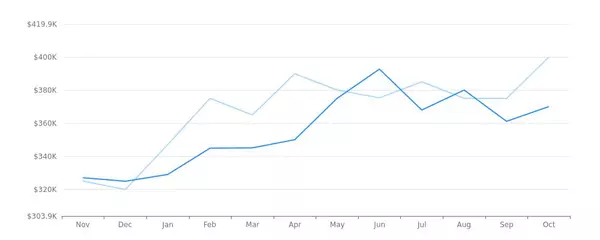The Three Aspects of Valuation for Commercial Properties: A Comprehensive Guide

If you're seeking to buy, sell, or rent a commercial property, understanding how the property value is assessed is crucial. The value of a commercial property depends on several factors. Some include comparative sale value, construction cost, and capitalization rate. These aspects help not only property owners but also buyers and renters to know what makes a commercial property a good investment. In this blog post, we break down the three key components of a commercial property's value, how they work, and why they matter.
Comparative Sale Value:
The first and most commonly used valuation method is the Comparative Sale Value (CSV). It is the assessment of a property value by comparing it to sales data from similar properties in the same location. It analyzes the prices of recently sold similar buildings, appraisers can estimate the current value of a property. Thus, if a property is in a highly desirable area, its value will likely be higher, and vice versa. A property's condition, location, and features are considered when performing CSV. It can be an ambiguous method because standardizing properties is not easy. Additionally, some differences that add value may not be visible.

Construction Cost:
The second aspect of property valuation is construction cost. This method calculates the value of the property by totaling the costs associated with construction. While calculating the construction cost, property appraisers consider the type of materials used, the labor cost, and the time needed. Construction cost valuation is often used for newly built properties since their depreciated value isn't yet being considered. The older a building is, the more depreciated it becomes because of the passage of time, which affects its worth.
Capitalization Rate:
The third valuable metric is the capitalization rate, also known as CAP rate. This method sets the value of an investment property by dividing the net operating income by its price. The net operating income refers to the potential yearly income that the property generates. From market rent and extra income from the property's amenities, less any operating expenses. In short, CAP rate reflects the opportunity cost you can incur by investing in a single property. A lower cap rate means better investment opportunities.
Location, Location, Location:
While all three metrics mentioned above play an essential role in determining the value of a commercial property, location is the icing on the cake. Regardless of the property's age and condition, it's difficult to value it correctly if it's not situated in a good location. A commercial property located at the right place and in the right market is going to be worth more. It guarantees better traffic, customers, and profitability. An appraiser will always keep in mind the location's potential growth when determining the final value of a property.
In summary, the three aspects of valuating commercial properties are Comparative Sale Value, Construction Cost, and Capitalization Rate. An understanding of these metrics is crucial when buying or renting commercial properties. The location of a property can make a vast difference in its value, but these other factors also impact the price. Take these key aspects into consideration when making commercial property investments. Owners, renters, and buyers can make informed decisions on which properties to invest in. Always remember, commercial property is an excellent source of investment, and keeping an eye on its value is always essential.
Contact Shawn Wilmoth REALTOR® today for help finding exactly what you're looking for.
Categories
- All Blogs (1002)
- Airbnb Realtor (13)
- Barndominium (6)
- Buying a home (58)
- California Buyers (17)
- Commercial Broker (2)
- Commercial Property (33)
- DR Horton Homes (5)
- East Tennessee (60)
- Experienced Realtor (40)
- Experienced Tennessee Realtor (67)
- For-Sale By Owner (24)
- FSBO (17)
- Gatlinburg (30)
- Gatlinburg Cabins for Sale (2)
- Gatlinburg Rental Homes for Sale (6)
- How to pick a realtor (14)
- Industrial Property (9)
- Invesment Real Estate Gatlinburg (4)
- Investment Property Realtor (27)
- Knoxville (67)
- Knoxville Jobs (1)
- Knoxville Zillow Reviews (1)
- Listing your home (30)
- Mobile Homes (7)
- Modular Homes (9)
- Morristown (28)
- Mortgage (3)
- New build homes (24)
- Price of Homes in Knoxville (10)
- Realtor Blog Feed (3)
- Reccomended Tennessee Realtor (48)
- Refinancing (2)
- Rental Property (7)
- Retail Building sites (4)
- Retail Land for Sale (3)
- Selling a home (20)
- Short-Term Rentals (2)
- Smithbuilt Homes (2)
- Strawberry Plains (1)
- Tennessee (39)
- Tennessee Lenders (3)
- tract homes (1)
- Vacant Commercial Land (4)
- Warehouse for Sale (1)
- Zillow Agent (1)
Recent Posts










GET MORE INFORMATION

Agent | License ID: 354366
308 N PETERS RD. STE 225, KNOXVILLE, TN, 37922, United States
